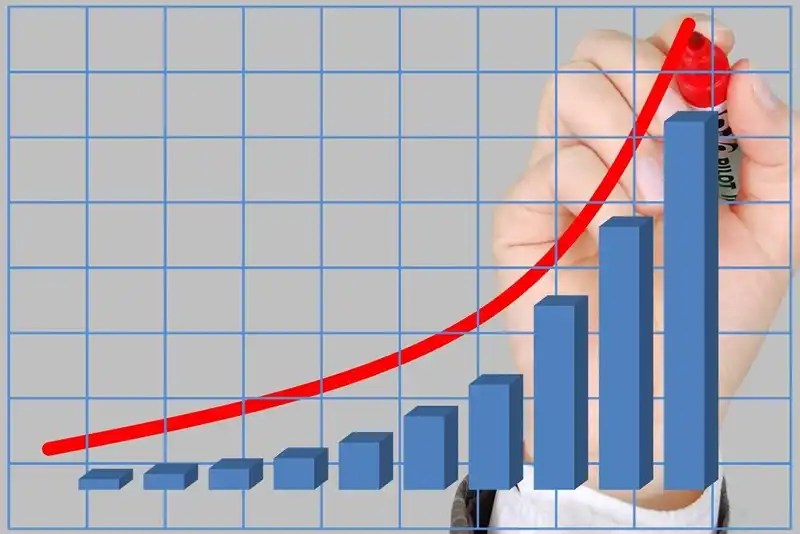How Elasticity and Total Revenue Work

What is the Relationship Between Elasticity and Total Revenue

Price elasticity is relevant to changes product price change in response to demand. The ratio of percentages is measured by this formulaic equation-
Price elasticity of demand = Percentage change in demand Percentage change in price
The price is considered elastic when the ratio is higher than one. As prices rise the demand lowers. If the ratio is lower than one, demand for the product stays relatively the same even with a price change. Meaning, a price increase wouldn't set back a company in sales volume.
Factors That Affect Price Elasticity
- Substitutes- When prices rise, consumers often look for substitute products that will provide them the same experience for less cost. Generalized versions of brand name items are often substituted due to the higher cost of the brand name product. This is considered elastic demand. When there are less alternatives to choose from the demand becomes less elastic.
- Necessities over Luxuries- Necessities, or necessary products, are those items that a consumer must have regardless of cost. Things like energy, water, and gas would be considered necessities. So, when companies raise prices on those utilities, consumers find a way to pay them. Luxuries are usually high price tag items that are a luxury to own but aren't necessary to have. New cell phones or computers often fall under this category. The demand can be high for a luxury item but there are consumers who will put off buying them until prices are lowered.
- Consumer Income- Consumers are what drive sales. With that in mind, products which can take a bite out of a consumers income are sensitive to price hikes. The automotive industry keeps this in mind when pricing vehicles. If a car is priced too high, consumers will delay purchasing it. But if a smaller item, like a pack of gum, has a price hike the increase is usually modest and won't affect the consumer income enough for them to delay the purchase.
- Short-term vs. long-term timing- Gas is a product that has an inelastic price for the short-term but can be elastic in the long-term. When gas prices raise, consumers might fill up less but they are still filling up because it is a necessity to keep their cars running. However, when gasoline prices are too high for too long, consumers start to adjust by taking public transport, car pooling, etc.
Why Elasticity Is Important
The relationship between price elasticity and total revenue is important to marketers. In order to set competitive prices understanding price elasticity is imperative to a successful business. If a company is aware that product demand is inelastic, they can move forward with a price raise and not worry about sales volume declining. Measuring price elasticity can also help companies stay competitive in the market by leveraging pricing against similar entities.
Factors That Affect Price Elasticity:
How Does Elasticity Affect Total Revenue
Supply and demand factor into elasticity and total revenue. When product demand is inelastic, a supply increase brings down total revenue. A supply decrease will reflect in a higher total revenue achieved.
If demand is elastic, the reverse is true with respect to supply impacting the business sales. Supply increase leads to a total revenue increase where a supply decrease also decreases revenue.
Total Revenue and Elasticity of Demand
Being knowledgeable about product elasticity helps when calculating operational profits. Pricing elasticity is a main concept when discussing revenue and profit margins.
A business owner looks at elasticity when deciding to raise prices while accounting for increased revenue. Two factors that determine a price raise-
- Price increases increase revenue on units sold
- Price increases sell fewer units
Clearly, these are two opposing objectives. The first thing a shop owners notes is any undiscovered opportunities when demand is either elastic or inelastic.
- Elastic- Quantity outweighs price. In other words, when price decreases more units are sold and cash flow coming in from units sold will outweigh any revenue that may have been lost by lowering the product price.
- Inelastic- Price outweighs quantity. Meaning when a price is increased, the higher price will produce more revenue than any income lost due to less units sold.
Conclusion to Elasticity and Total Revenue

- The demand curve is either elastic or inelastic and has very different effects in relation to total revenue.
- When prices decrease but total revenue increases it is called elastic.
- Price elasticity is determined by a product price change in response to consumer demand.
- Factors that affect price elasticity include- alternative products; choosing necessity over luxury; consumer income; long-term and short-term pricing.